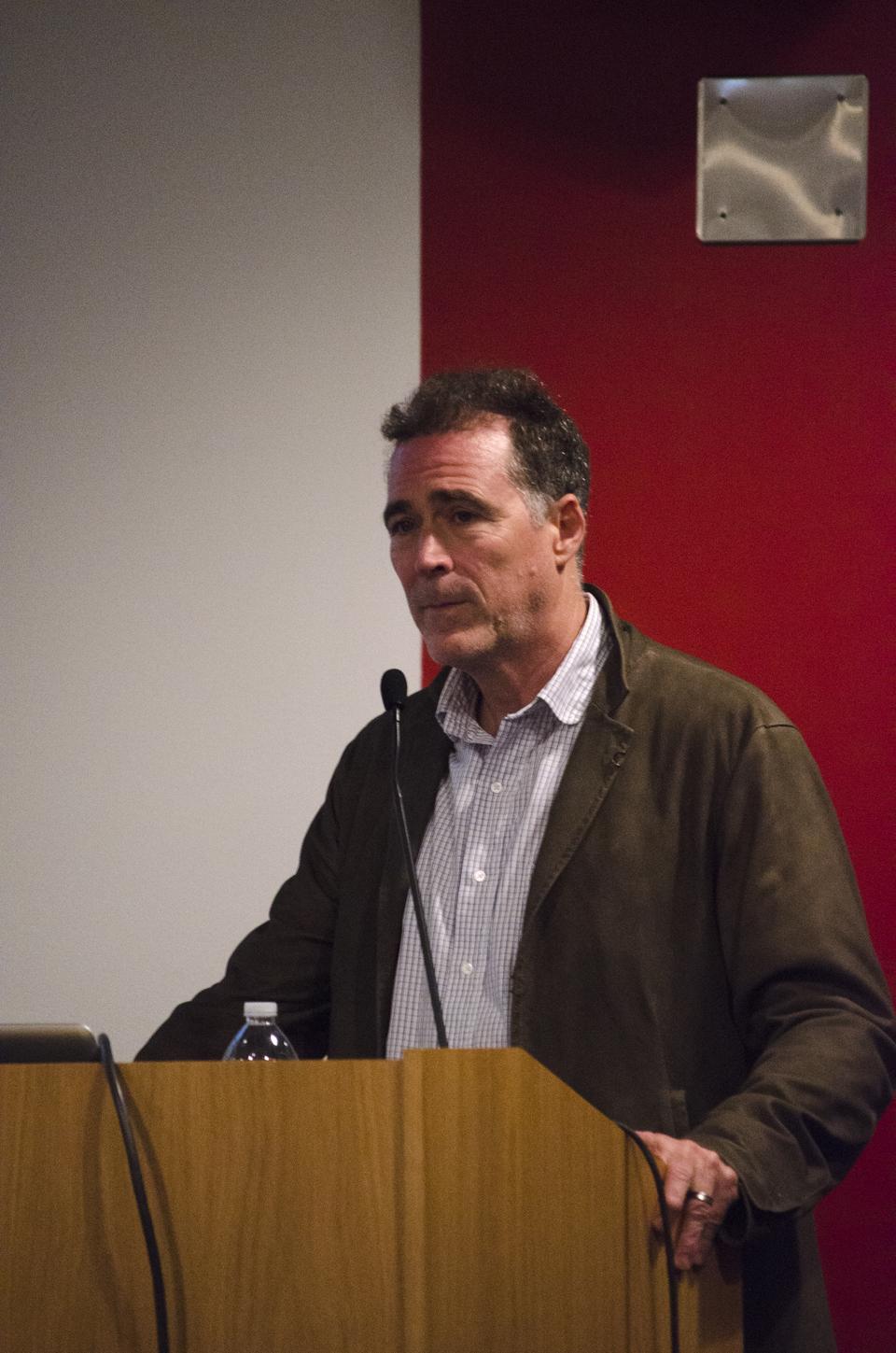
News
Cambridge Residents Slam Council Proposal to Delay Bike Lane Construction

News
‘Gender-Affirming Slay Fest’: Harvard College QSA Hosts Annual Queer Prom

News
‘Not Being Nerds’: Harvard Students Dance to Tinashe at Yardfest

News
Wrongful Death Trial Against CAMHS Employee Over 2015 Student Suicide To Begin Tuesday

News
Cornel West, Harvard Affiliates Call for University to Divest from ‘Israeli Apartheid’ at Rally
James Casebere Talks Photography

James Casebere, an accomplished post-modern photographer, laid out his philosophy of photography, which focuses around using empty space to evoke an emotional response from viewers, during his talk on Thursday night.
“I suppose you could say that, more often than not, emptiness is my subject,” Casebere, a visiting lecturer, said at the Carpenter Center. “I very consciously try to put the viewer in the image and imagine them in relation to the space that is in the image,” he later added.
Casebere often photographs model landscapes and scenes—intricately detailed yet sparse structures that he constructs to replicate particular kinds of buildings. Casebere then subjects these models to varying degrees of dramatic lighting and coloring.
His work has been displayed at a number of prominent museums, including the Whitney, The Guggenheim, and the Metropolitan Museum of Art in New York City.
In his talk, Casebere presented a slideshow full of his most powerful photos and discussed their meanings. Many pieces were inspired by his childhood memories. These include “Bacillus Pestis,” based on his experience of watching Saturday morning cartoons, and “Warm Bed, Hot Coals,” grounded in childhood concerns about coal fires on Minnesotan streets during winter.
Another part of Casebere’s work was inspired by prisons in America, and their general sense of isolation. During this period, Casebere constructed many haunting pieces, including “Eastern State Penitentiary,” “Panopticon Prison,” “Sing Sing,” “Asylum,” “Two Bunk Cell,” and “Toilets,” among others.
This series was a favorite among audience members. “I thought the prison pictures were very powerful by letting you as the viewer experience the loneliness and the confinement of these spaces,” said Bill Deveney, a Cambridge resident.
The American suburb has also served as a focal point for Casebere’s work. “This series is partly about evoking the memories and history of the place, but much more about the present than the past,” he said.
These images were also quite striking to audience members, including Professor David Rodowick, chair of the VES Department. “I was surprised at what a powerful emotional response these images generated,” he said. “They lack human beings, yet they draw you in. The isolation implies that you as the viewer are meant to fill in the space. He carefully controls perspective to make you feel part of the image itself.”
Want to keep up with breaking news? Subscribe to our email newsletter.
